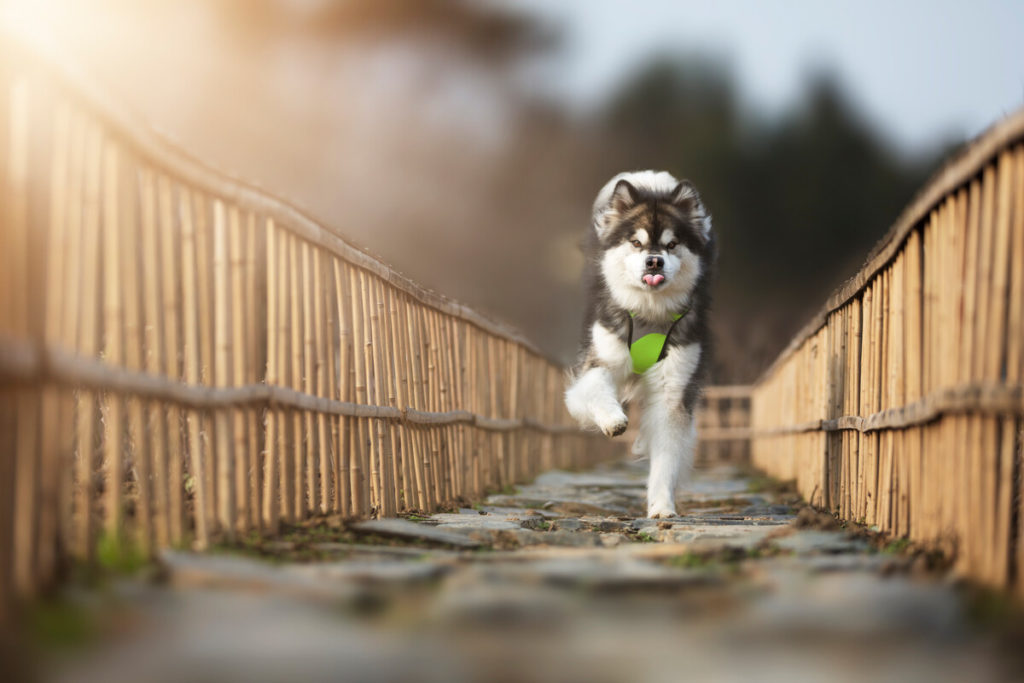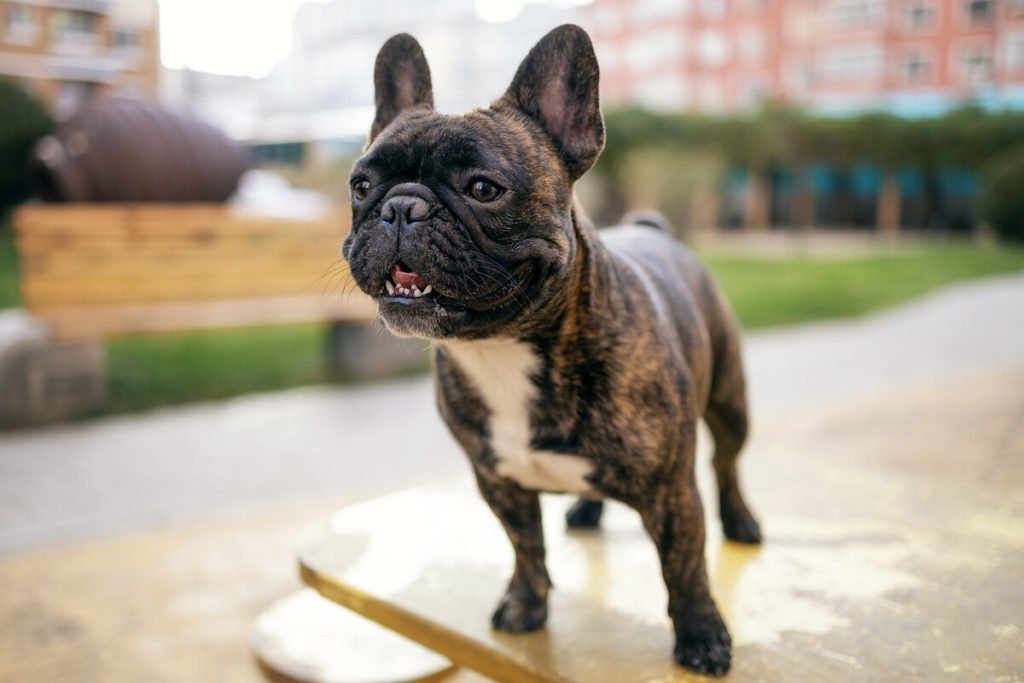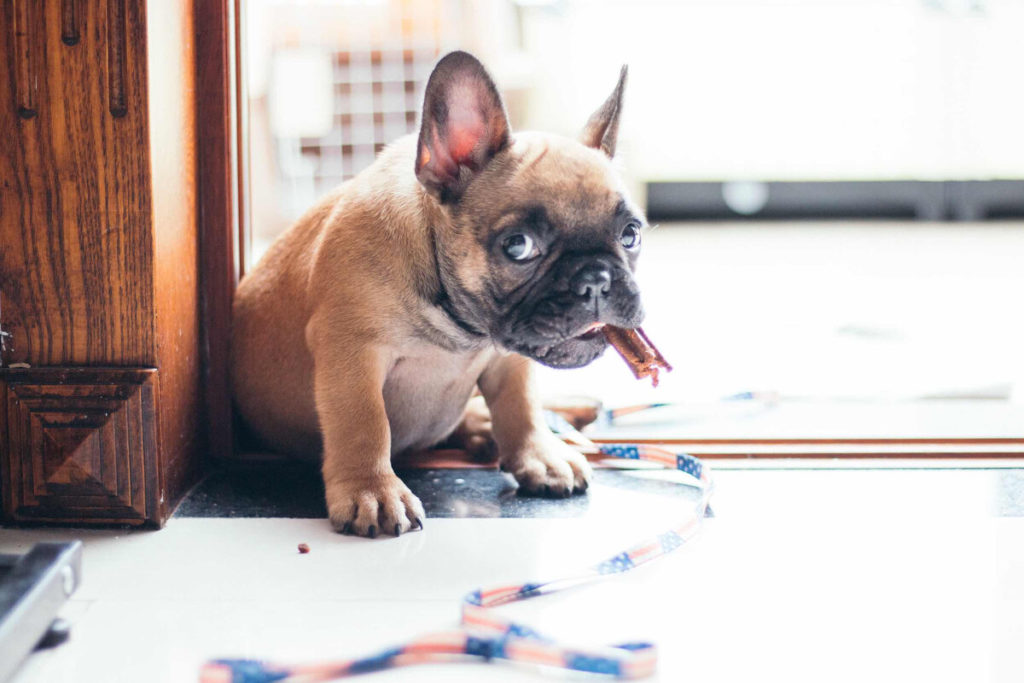When a Alaskan Malamute jumps on you he wants to say hi. Your dog is happy to see you and he wants to greet you. He gets excited when you come back home from grocery shopping or from work.
In case you are wondering ‘why does my Alaskan Malamute jumps on me’, you’ll find answers in this article. When a Alaskan Malamute puppy jumps on you or on other people you might find it adorable. But Alaskan Malamute grow fast and jumping on other people or on you it will not be so much fun anymore.
I trained my Alaskan Malamute at an early age to stop jumping on me. He was super excited and jumped on my legs while I was filling his bowl with food. Nothing compares with scratches on legs and being nibbled early in the morning. My Alaskan Malamute puppy started to grow really big so I had to stop him from jumping all over me. As I said earlier, you might find it cute when your sweet and small Alaskan Malamute puppy jumps on you. But he will grow and a big and energic boy or girl as a Alaskan Malamute could easily knock down a child or a more fragile person.

Alaskan Malamute jump on people instinctively
Your Alaskan Malamute jumps on people because this instinct is well-grounded in your dog’s behavior. As puppies, Alaskan Malamute lick their mother’s mouth and jump on her. Especially when the puppies are hungry or if they want to play. They are puppies and this is a natural behavior for them. Even when a Alaskan Malamute puppy grows, he will still sniff and lick other dogs’ mouths and sniff the rear end. In the dog’s world, this is an appropriate and polite greet. But your Alaskan Malamute shouldn’t jump on people when he wants to greet them. We can find better ways for your Alaskan Malamute to greet you and other people. We’ll talk more about this in this article.
How can I stop my Alaskan Malamute to jump on me?
Your Alaskan Malamute jumps on you because that is his instinct and you reinforced it. Don’t worry, we all do that. But our dogs are smart and they learn quickly and we can stop reinforcing bad behavior and train them to act properly. If your Alaskan Malamute puppy jumped on you and you started giving him attention, pats, eye contact and happy talk then you reinforced this behavior. Day after day, jump after jump, pat after pat, you reinforced this behavior and trained him to jump on you. When your small Alaskan Malamute, your sweet ball of fur grows, him jumping on you might cause problems or even get you frustrated. You will respond differently when your Alaskan Malamute jumps on you and he will not quite understand. Your dog might be even disappointed because his best friend rejects his greeting. And we don’t want that. We want happy owners and happy puppies. So, let’s see how can you stop your Alaskan Malamute from jumping on you.

Start training your Alaskan Malamute early
It’s better to start training your Alaskan Malamute at an early age. Training your Alaskan Malamute not to jump on you is no exception. Puppies are more susceptible to training than adult dogs. Adult dogs have strongly established habits and they need more training when you want to correct some inappropriate behaviors. When your Alaskan Malamute puppy jumps on you don’t pat him, don’t look directly at him and don’t praise him. Ignore him or stay still. Praise and reward him when he doesn’t jump on you and he stays on his four legs.
Don’t push your Alaskan Malamute when he jumps on you. Don’t yell “No! Off! Don’t jump on me!“ at your Alaskan Malamute. Yelling at your dog and looking at him or pushing him is perceived by him as attention. He will continue to jump on you because you give him attention, therefore you are reinforcing this behavior.
As I mentioned earlier, my Alaskan Malamute jumped on me when it was feeding time. When he saw me with his bowl, he jumped on me. Each time he would jump on me I stopped and ignored him. I taught him to sit and wait until I put his bowl on the floor. After he hears the cue he can come to eat. This is how feeding time goes now. My pups wait patiently for the cue. No more jumping. My puppy was very excited about his food. Seeing me not giving him attention and delaying or removing his food made him learn pretty quickly. He loves his food and good behavior is rewarded with food, treats, and pats.

Why does my Alaskan Malamute jump at people’s faces?
You might think that your Alaskan Malamute wants to bite your face when his jumping at your face. But this is not a sign of aggression. If he growls while he is jumping at someone’s face that’s is another type of behavior. But let’s get back to why your Alaskan Malamute jumps at someone’s face. Jumping and trying to reach upwards towards someone’s face is how your Alaskan Malamute greets instinctually.
As I mentioned earlier, a dog greets another dog by sniffing his rear end and licking his mouth. They are both on four legs and the distance between muzzles is not big. Following this behavior, your Alaskan Malamute wants to reach and lick your mouth but in order for him to do that, he has to jump upwards towards you. If Alaskan Malamute are not trained on how to greet a human properly, they will jump on people to greet them.
How do I get my dog to stop jumping on people?
As I mentioned earlier, Alaskan Malamute jump on people to greet them. But humans and dogs don’t react or think the same. So maybe you don’t want your Alaskan Malamute to jump on other people. Your Alaskan Malamute will be so disappointed when the human rejects his greet so we need to find a better way for him to greet humans. Your Alaskan Malamute needs to socialize with humans and with other dogs. He only needs to know the differences.
Start teaching your Alaskan Malamute to stop jumping on people
Alaskan Malamute love attention and they also love to greet people and socialize. Find a family member or a friend and start training. Dogs are not the same and you might need other training methods. We need to train our Alaskan Malamute because we don’t want to make the guest feel uncomfortable. Our dogs will not feel relaxed either if we don’t train them. Your Alaskan Malamute wants to greet your guest but if he is dirty on his paws, he will get your guest’s clothes dirty. And not everyone enjoys Alaskan Malamute hair all over the clothes.

Chose a method that works for your Alaskan Malamute and keep doing it. Consistency is the key. He will not learn from the first visit. Ask your friend to do this more often until your dog learns how he should behave. When your Alaskan Malamute stops jumping on your friend, find another way for your dog to greet people. Train him to give paw in order to greet humans.
How do I get my Alaskan Malamute to stop jumping on people at home?
The first method – Ignore your Alaskan Malamute until he will stop jumping
As I mentioned earlier, you will need a friend to train your Alaskan Malamute. Invite your friend to your house and tell him to ignore your Alaskan Malamute when he arrives. Your friend will not look at your dog and he will not pat him. Invite your friend to take a sit while he keeps ignoring your dog. When your dog is more relaxed and he stops jumping on your friend pet him and encourages this behavior. Give him treats and praise him. Try to give the treats at his level or throw the treats on the floor. We want to keep our dogs on the four paws and not to make him jump again. Give your dog high value treats when you’re training him such as cheese. Make sure your dog is not lactose intolerant. You can also try with fruits or veggies if that is the case.
The second method – remove and bring back your Alaskan Malamute in the room
If the first method doesn’t work, remove your Alaskan Malamute from the room and bring him back in the room. Let him stay with you and your friend only when he stops jumping. When your Alaskan Malamute starts jumping say a sharp “Ah, ah” and remove him. Repeat until your Alaskan Malamute is showing consistent good behavior.
The third method – Distract your Alaskan Malamute
The third method is to distract your Alaskan Malamute with treats. Invite your friend inside and throw some treats on the floor or give him a tasty frozen filled KONG. He will be busy eating those treats and he will ignore your friend. By the time he finishes the KONG, your Alaskan Malamute will not be so excited.

As I mentioned earlier, there are many training methods. You just have to choose the one right for you and your friendly Alaskan Malamute.
Last thoughts on how to stop your Alaskan Malamute from jumping on you
Stop giving attention to your Alaskan Malamute puppy when he jumps on you. Even if you find him cute as a button when he showers you with kisses and love when he jumps on you. If you have other people in your household tell them how to act when the Alaskan Malamute jumps on them. Don’t confuse your dog. If you will ignore him while he jumps and another member of your household pats and treats him when he jumps on him, your Alaskan Malamute will not know what he is supposed to do. He will feel disappointed when you’ll refuse his greet if not everybody is on board with the training.
Encourage your Alaskan Malamute to stay on his four legs with pats and treats. When you start to cuddle and snuggle with your dog, try to sit on the floor or at his level. By doing so, he will know that now is his time. And not when he jumps on you. As I mentioned earlier, dogs are different. Luckily, there are plenty of methods on how you can train your dog to stop jumping on you. You just need to find the right one for you and keep with it. I hope this article helped you.
Read Why Alaskan Malamute like balls so much? and find out more about your Alaskan Malamute behavior.




